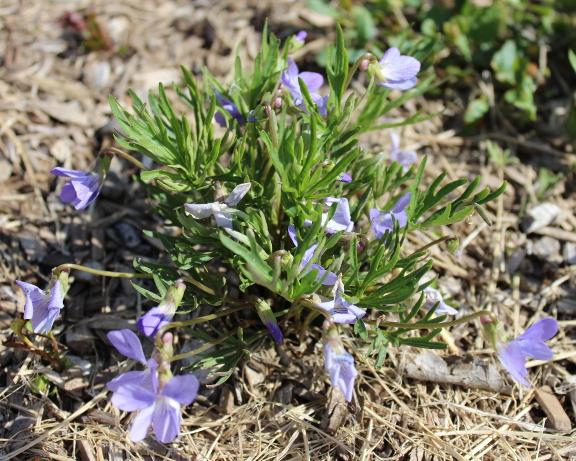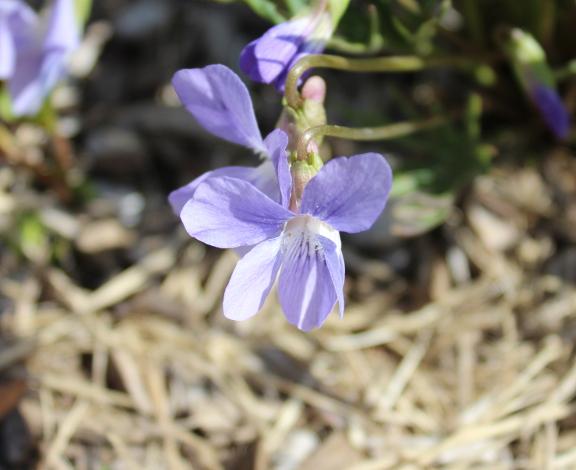Profile

An early blooming native perennial, Viola pedatifida – commonly known as prairie or larkspur violet, is a low-profile addition to your garden. This species is small in stature, generally reaching less than a foot in height, making it a good choice for garden borders or as ground cover.
- Scientific name: Viola pedatifida
- Common names: Prairie violet, crow-foot violet, larkspur violet, birdsfoot violet
- Plant size: 6 – 12 in.
- Flower color: Purple
- Bloom period: May – June, Sept.
- Growing conditions: Full sun, well-drained soil
- Why you should plant it: Early bloomer, larval host plant for the Regal Fritillary and other South Dakota fritillaries.

Characteristics
Prairie violet is low-growing with deeply lobed leaves (Figure 1). The purple flowers hang singly from a leafless flower stalk (Figure 2), and there are many blooms per plant. Some violet species can be aggressive in the garden, but the prairie violet is not one of them. Along with buffalo bean it was one of the first plants to flower at the Oahe garden. This violet is also known to rebloom in September, putting on a late-season show.
Prairie violet is also the larval host for the Regal Fritillary butterfly (Speyeria idalia). This butterfly has an approximately 3 inch wingspan and can be found across much of South Dakota wherever native grassland habitat is present. Many other fritillary butterfly species use violets as host plants, so make sure put in enough plants for you and the caterpillars to enjoy.


